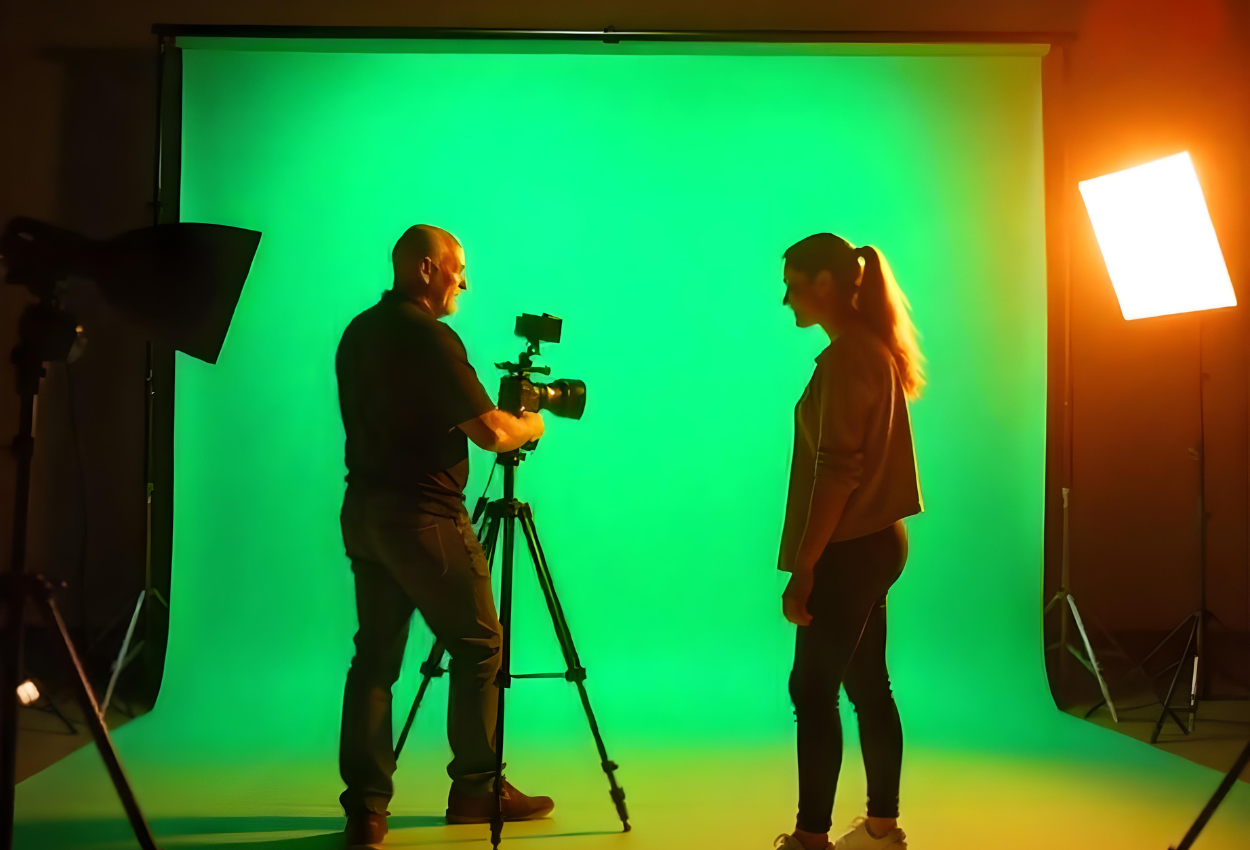Is Green Screen Necessary? When You Need It & When You Don’t

Strong 8k brings an ultra-HD IPTV experience to your living room and your pocket.
In 2024, with AI-generated imagery and virtual production rapidly evolving, the role of green screens in video production is changing. You’ve probably seen them used in blockbuster films, TV shows, and YouTube videos to create jaw-dropping visual effects.
But with all the tech advancements, do you still need a green screen for your next video project?
The answer might surprise you.
Keep reading to discover when a green screen is essential and when to think outside the screen to explore other options.
What is a Green Screen?
A green screen is used in filmmaking and video production to create special effects, digital backgrounds, and composite images. It is a backdrop—often bright green or blue—placed behind actors or objects during a shoot.
Many vi deographers and filmmakers prefer green screens because their high luminance helps cameras capture cleaner, more precise shots.
When You Need a Green Screen
So, why has the green screen become such a superstar in video production despite the rapid advances in digital effects and virtual sets? It is because of its flexibility and control that few other tools can replicate. For example:
1. Changing Backgrounds
A green screen lets you easily modify your background in post-production without the cost of on-site filming.
Take The Mandalorian, for example. Green screens (and their more advanced sibling, blue screens) were crucial in creating vast, immersive worlds. Without them, those iconic landscapes would have been impossible to achieve with practical sets alone.
2. Creating Cool Visual Effects
Green screens shine in scenes requiring complex visual effects. With it, you can make your actors fly, visit distant planets, or stand atop a mountain without leaving your studio. It can simplify blending live-action with effects, making the unreal look real. And trust us, getting that perfect mix without a green screen? It is a tough gig.
3. Flexible Filmmaking
For projects that need multiple settings, a green screen lets you film everything in one place while making the scenes look like they were filmed in different locations or eras.
Also, filming on location can be unpredictable—you can face bad weather, poor lighting, and uncooperative crowds. But with a green screen, you are the boss. You can shoot your scene just how you want it and then drop it in any background you like during post-production. This control is valuable in high-stakes projects where every detail matters.
4. Saving Time and Money
Green screens are handy when on-site filming is too costly or impractical. Imagine trying to film a high-speed car chase through downtown LA without a green screen. It would require shutting down streets, coordinating with local authorities, and spending a small fortune on permits. With a green screen, you can create the same scene in a studio, avoiding all that hassle.
When You Don’t Need a Green Screen
While green screens are incredibly versatile, they are not always necessary. Consider other methods if:
1. Natural Settings: If you are shooting a scene in a location that matches your vision, using the actual backdrop can save you time and effort. Plus, it can add an authentic feel that is hard to replicate, even with the best post-production tricks.
2. Simple Edits: If you are working on a project like interviews, tutorials, or vlogs that do not require complex backgrounds but basic edits like color correction, cuts, or filters.
3. Post-Production Workload: Another thing to consider is the time and effort involved in chroma keying. This process can be time-consuming if you do not shoot the footage under ideal conditions.
4. Budget: We know that green screens can be cost-effective, but they require good lighting and skilled post-production to look convincing. If your budget is tight, weigh the costs of using a green screen versus shooting on location or using practical effects.
Making the Right Choice for Your Project
Green screens are a powerful tool in video production, offering endless creative possibilities. But they are not always the right fit for every project. Understanding when to use a green screen—and when to opt for other methods—can be crucial to your project’s success.
At Motion Effects, we can help you in making these decisions. With our deep expertise in advanced VFX, we can guide you on when a green screen will elevate your project—and when you might be better off with other methods.
Whether you need flawless chroma keying or expert post-production, we’re here to help. Contact us today, and let’s create something amazing together.
Note: IndiBlogHub features both user-submitted and editorial content. We do not verify third-party contributions. Read our Disclaimer and Privacy Policyfor details.


